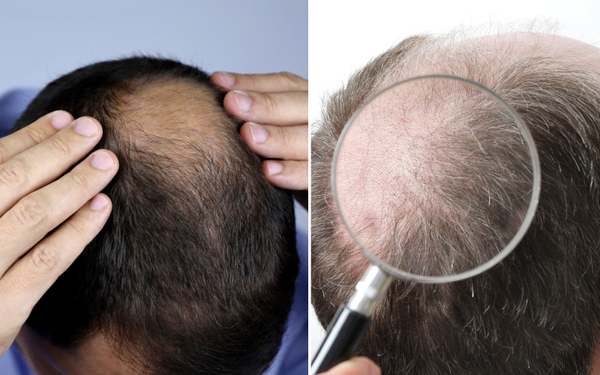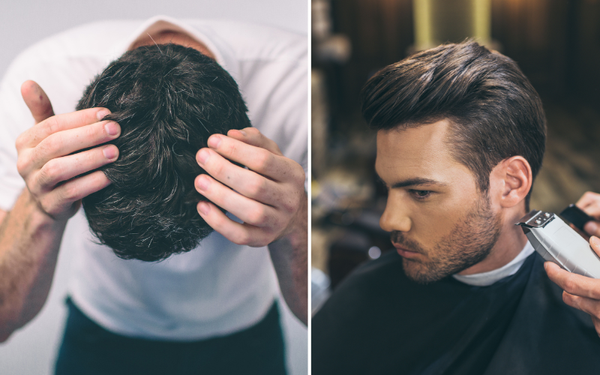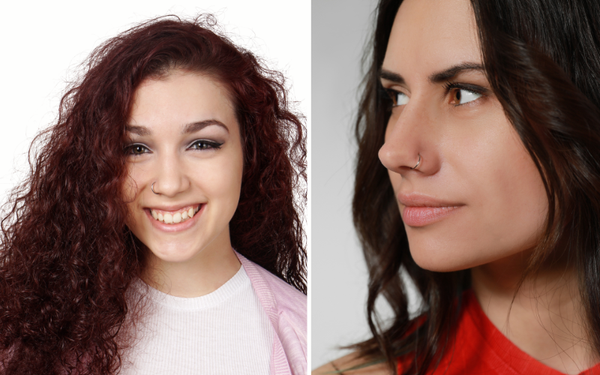Imagine soaking in a warm bath filled with healing salts and aromatic essential oils, letting all your stress and worries melt away. Bath salts have been used for centuries to promote relaxation, improve skin health, and enhance overall well-being. In this guide, we will explore the different types of bath salts, their benefits, and various ways on how do you use bath salt. So let’s start your journey towards the ultimate relaxation experience.
Key Takeaways
- This guide provides information on the types and benefits of bath salts, as well as how to incorporate them into self-care routines.
- Learn about mixing essential oils with bath salts for an improved experience and addressing common skin concerns such as dryness, itchiness, irritation or acne.
- Be aware of precautions when using bath salt products including allergies and sensitivities, pregnancy considerations, proper storage & shelf life.
Understanding Bath Salts: Types and Benefits

Bath salts come in a variety of forms, each offering unique benefits. The most popular types are Epsom salts, Dead Sea salts, and Himalayan sea salts. These salts not only provide relaxation but also offer numerous health benefits, such as soothing sore muscles, detoxifying the skin, and treating various skin conditions. Incorporating bath salts into your self-care routine is an excellent way to improve your overall well-being and reap the therapeutic benefits they provide.
Whether you prefer a relaxing bath, an invigorating shower scrub, or a soothing foot soak, bath salts provide an effective and enjoyable way to enhance your self-care routine. This guide will cover the diverse types of bath salts, their unique benefits, and multiple ways to utilize them.
Epsom Salt
Epsom salt, a natural mineral composed of magnesium and sulfate, is known for its numerous health benefits. These benefits include reducing inflammation, relieving stress, and promoting relaxation. Adding Epsom salt to your bath allows you to enjoy its calming effects on your body and mind, making it an ideal epsom salt bath experience.
Apart from relaxation, Epsom salt can also provide relief for various skin conditions. Its anti-inflammatory properties make it an effective remedy for soothing dry or itchy skin. Also, Epsom salt acts as a natural exfoliant, assisting in removing dead skin cells to give your skin a soft and smooth texture.
Dead Sea Salt
Dead Sea salt, sourced from the mineral-rich Dead Sea, is another popular type of bath salt. Its high concentration of minerals, such as magnesium, potassium, calcium, and bromide, provides numerous health benefits. These benefits include improving various skin conditions, soothing sore muscles, and promoting wound healing. With dead sea bath salts, you can experience these advantages right in the comfort of your own home.
Apart from its skin healing properties, Dead Sea salt also helps to exfoliate dead skin cells, leaving your skin feeling soft and revitalized. Integrating Dead Sea salt into your bath routine lets you enjoy its restorative and rejuvenating effects on your skin and overall well-being.
Himalayan Sea Salt
Himalayan sea salt, known for its beautiful pink hue, is packed with essential minerals that closely resemble the composition of human blood plasma. These minerals offer numerous health benefits, including:
- Calcium
- Magnesium
- Potassium
- Iron
- Manganese
Using Himalayan sea salt in your bath offers several benefits:
- Calming effects on your body and mind
- Maintaining optimal fluid balance in the body
- Preventing dehydration
- Improving exercise performance
However, it’s important to remember that consuming excessive amounts of any salt, including Himalayan sea salt, can lead to serious health conditions like high blood pressure, heart disease, and stroke.
How to Use Bath Salts: Step-by-Step Guide

Now that we have explored the different types of bath salts and their benefits, let’s learn how to use them effectively. Whether you prefer a luxurious bath, invigorating shower scrub, soothing foot soak, or a rejuvenating hand soak, bath salts can be easily incorporated into your self-care routine.
This guide will provide a step-by-step process on different ways to use bath salts, ensuring you maximize your bath salt experience.
Preparing a Relaxing Bath
Preparing a relaxing bath with bath salts is simple and easy. Here’s how:
- Fill your bathtub with warm water.
- Add 1-2 cups of your chosen bath salt, such as Epsom salt or Dead Sea salt, to the water.
- Stir the bath salts into the water using your hand until fully dissolved.
Next, immerse yourself in the tub and soak for at least 10 minutes to experience the full benefits of the bath salts. After your soak, it is recommended to shower off any remaining salt residue on your skin to prevent irritation.
Enjoy the soothing effects of bath salts on your body and mind during a relaxing salt bath, also known as salt baths.
Creating a Shower Scrub
If you prefer taking showers, you don’t need to miss out on the advantages of bath salts. You can create a shower scrub with them for the same effect. Here’s how:
- In a small bowl, combine 1 cup of bath salts.
- Add 1/2 cup of coconut oil.
- Add 12 drops of your favorite essential oil.
- Add a teaspoon of vitamin E oil.
- Mix everything together to create a homemade shower scrub.
Apply the body scrub to wet skin in the shower using circular motions, focusing on areas with dry or rough skin. Leave the scrub on your skin for about 5 minutes, and then rinse off with warm water. This shower scrub will not only exfoliate your skin but also nourish and moisturize it, leaving you feeling refreshed and revitalized.
Crafting a Foot Soak
Crafting a foot soak with bath salts is an excellent way to relieve stress, soften skin, and promote relaxation. To create a foot soak, mix 1-2 cups of your chosen bath salt with warm water in a large basin or foot bath. Ensure the salts are fully dissolved before immersing your feet in the water.
Soak your feet for 10-15 minutes, allowing the bath salts to work their magic. After your foot soak, gently pat your feet dry and apply a moisturizing lotion to keep them soft and smooth. This soothing foot soak is perfect for unwinding after a long day on your feet.
Making a Hand Soak
Bath salts can also be used to create a nourishing hand soak, perfect for removing dead skin, moisturizing, and soothing tired hands. To make a hand soak, mix ½ cup of your chosen bath salt with warm water in a bowl. Stir the salts until fully dissolved.
Submerge your hands in the bowl for 10-15 minutes, allowing the salts to soften and nourish your skin. After your hand soak, gently pat your hands dry and apply a moisturizing lotion to lock in the hydration.
This rejuvenating hand soak is an excellent way to treat yourself to a little pampering at home.
Enhancing Your Bath Salt Experience with Essential Oils

To further enhance your bath salt experience, consider incorporating essential oils for added benefits. Essential oils can provide additional therapeutic properties such as aromatherapy, skin nourishment, and relaxation.
This guide will cover how to select suitable essential oils for your bath salt experience and offer tips on mixing and application for the best results.
Choosing the Right Essential Oils
Choosing the right essential oils for your bath salt experience is essential for achieving your desired outcome. Essential oils can provide various benefits, such as relaxation, energy boosting, and pain relief.
When selecting essential oils, consider your personal preferences and desired effects. For example, lavender and chamomile oils are known for their calming properties, while peppermint and citrus oils can invigorate and energize. Experiment with different essential oils to create your perfect bath salt blend.
Mixing and Application Tips
For optimal results, it’s important to correctly mix and apply essential oils with bath salts. Here’s how:
- Mix a few drops of your chosen essential oil with your bath salts in a small dish.
- Stir the mixture well to ensure the essential oil is evenly distributed.
- Add the mixture to your bath or shower scrub.
When incorporating essential oils in bath salts, remember that a little goes a long way. Start with just a few drops and adjust the amount based on your personal preferences and skin sensitivity. By properly mixing and applying essential oils with bath salts, you can create a luxurious and therapeutic experience tailored to your needs.
Addressing Common Skin Concerns with Bath Salts

Bath salts can be a powerful tool for addressing common skin concerns. Whether you’re dealing with dry or itchy skin, irritated skin, or acne-prone skin, bath salts can help alleviate these issues and promote healthy skin.
This guide will examine how to resolve specific skin concerns using bath salts and offer tips for obtaining the best results.
Soothing Dry or Itchy Skin
To soothe dry or itchy skin, consider using bath salts combined with moisturizing ingredients like almond oil, oatmeal, or powdered milk. These ingredients can help hydrate and nourish the skin while providing relief from itching and discomfort.
For best results, follow these steps:
- Add 1-2 cups of bath salts to a warm bath.
- Soak in the bath for at least 10 minutes.
- After your bath, gently pat your skin dry.
- Apply a moisturizing lotion to lock in hydration and prevent further dryness or irritation.
Treating Irritated Skin
Treating irritated skin with bath salts can be highly effective, thanks to their anti-inflammatory properties. By incorporating bath salts and anti-inflammatory essential oils like tea tree oil, you can help reduce inflammation and soothe your skin.
To treat irritated skin with bath salts, follow these steps:
- Add 1-2 cups of Epsom salt or Dead Sea salt to a warm bath.
- Soak in the bath for at least 10 minutes.
- After your bath, gently pat your skin dry.
- Apply a soothing lotion or cream to keep your skin moisturized and protected.
Managing Acne-Prone Skin
Bath salts can also be beneficial in managing acne-prone skin. Epsom salt, for example, contains anti-inflammatory and antibacterial properties that can help treat acne-prone skin. Similarly, Dead Sea salt is known for its sulfur content, which is effective in combating acne and blemishes.
To use bath salts for acne-prone skin, follow these steps:
- Add 1-2 cups of Epsom salt or Dead Sea salt to a warm bath.
- Soak in the bath for 10-15 minutes.
- After your bath, gently pat your skin dry.
- Follow up with a non-comedogenic moisturizer to prevent clogged pores and further breakouts.
Precautions and Considerations

While bath salts offer numerous benefits, it’s important to consider potential risks and precautions. Some individuals may have allergies or sensitivities to certain bath salts or essential oils, which could cause skin irritation or other adverse reactions.
This guide will discuss specific precautions and considerations for situations like pregnancy, allergies, and correct bath salt storage.
Pregnancy and Bath Salts
Using bath salts during pregnancy can be a relaxing and soothing experience. However, it’s important to exercise caution and consult with your healthcare provider before using bath salts during pregnancy. Some types of bath salts, such as those containing Dead Sea salts, may not be suitable for pregnant women.
When using bath salts during pregnancy, always follow the advice of your healthcare provider and choose bath salts that are safe and appropriate for your specific needs.
Allergies and Sensitivities
If you’re allergic or sensitive to certain ingredients in bath salts or essential oils, it’s important to exercise caution and conduct a patch test before using them. Here’s how to do a patch test:
- Apply a small amount of the diluted bath salt or essential oil to a bandage or cotton pad.
- Place it on the inside of your arm.
- Leave it on for 24-48 hours.
- Monitor your skin for any signs of irritation, redness, or itching.
If you experience any adverse reactions during the patch test, avoid using the bath salt or essential oil on your skin and consult with a healthcare professional.
Proper Storage and Shelf Life
Correct storage and understanding the shelf life of bath salts are important to maintain their effectiveness and avoid contamination. Store bath salts in a cool, dry location away from direct sunlight, and use airtight containers to prevent moisture from causing the salts to clump up.
DIY bath salts should be discarded after one year, while store-bought bath salts may have a longer shelf life due to added preservatives. Always monitor the smell and color of your bath salts, and replace them if there are any noticeable changes.
Summary
Bath salts offer a luxurious and therapeutic experience, with numerous benefits for relaxation, skin health, and overall well-being. By understanding the different types of bath salts, their benefits, and various ways to use them, you can create a personalized self-care routine that addresses your unique needs. So why not treat yourself to a soothing bath salt experience and discover the transformative power of these natural wonders?
Frequently Asked Questions
How do you use bath salts?
Bath salts can be mixed into warm water until they dissolve, used as a scrub, or added to a foot soak. The drugs are usually snorted or ingested, and can also be smoked or injected with a syringe. This allows the user to experience a range of desired effects, such as euphoria, alertness, relaxation, and exfoliation benefits for their skin.
Do you need to rinse after using bath salt?
It is recommended that you rinse off excess salt and replenish the pH of your skin after using bath salt with a cool shower.
When should you put bath salts?
For best results, mix bath salts into the warm water of your bath or use them as a scrub in the bath or shower to enjoy their benefits and give yourself natural exfoliation. This will leave your skin looking radiant and healthy.
What do you do in a salt bath?
By adding Epsom salt to your bath, you can reduce pain and swelling from sprains and bruises as well as ease the discomfort of gout. Soaking in a salt bath can help soothe and relax sore muscles, providing relaxation and relief.
Can I use bath salts if I don't have a bathtub?
Yes, you can use bath salts even without a bathtub by creating a shower scrub, foot soak, or hand soak.
You Might Also Like...










